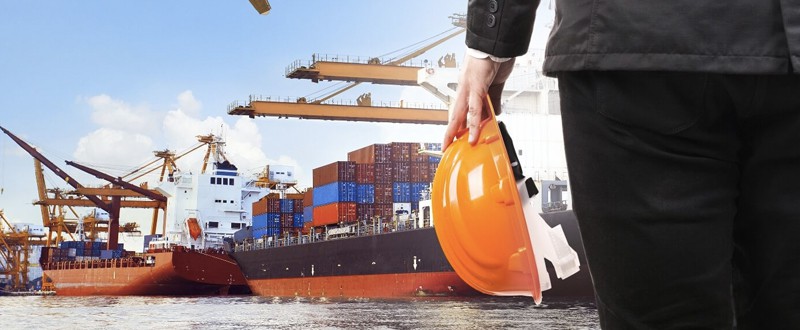Becoming an exporter has always been a major step forward for any business, and today’s ambitious SMEs are no exception. However, while global markets still provide the key to next-level growth it is actually easier than ever before for Australian enterprises to take the plunge and start selling abroad.
Businesses wanting to expand their trading network and include foreign as well as domestic buyers have traditionally faced three distinct barriers: costly and complicated logistics; time-consuming and opaque customs protocols; and of course the significant financial risks which selling abroad can entail.
In the last few years, innovation and technology has come to the rescue, along with a more enlightened attitude by government. This means there has never been a better time to start exporting. The rewards remain as big as ever, if not bigger.
Logistics of Exporting
The physical barriers to exporting goods from a country as geographically isolated as Australia are, on the surface, daunting. For most businesses, getting their product abroad will mean new forms of transport. However, technology is making it easier and cheaper than ever before.
One area where improvement has been almost continuous in recent years has been the actual transport available. Boats and planes have got more fuel efficient and therefore cheaper, and air freight in particular has expanded considerably so that more and more parts of the country are served by suitable operators.
At the same time, a second level of technology is making it much more straightforward and feasible for smaller businesses to arrange the logistics they need. With customer-friendly interfaces on the internet, logistics firms are now making it possible to arrange ever more specific shipments – and even some innovative business finance firms are getting involved.
This aspect of service has changed even more dramatically on the foreign side of the logistics chain. Until recently, arranging onward shipment in a non-English speaking market was tough enough – let alone building relationships with partners and re-sellers. Now, far more people speak English in Asia, but the biggest change is perhaps the advent of automatically translated pages that allow many simple tasks to be completed abroad just as easily as at home. This technology has improved so dramatically in the last 24 months that the prospects for breaking down language barriers even further are very exciting.
Regulations Around Exports
Australia’s bureaucratic requirements around exporting have also improved with the digital age. Just look at the clear advice available on the government’s exports site. Not only does it include clear warnings on the kinds of goods that will require a special license to export – it also offers help for firms interesting in expanding their horizons.
Finally, the government has understood the huge value to the economy which dynamic small companies can add if only they can be unleashed on the wider global market! There is still some red tape to navigate, but it’s easier than ever. Other countries continue, on the whole, also to acknowledge the mutual benefits of bilateral trade, and the process at the other end is therefore also often easier for Australian businesses than used to be the case.
Financing Your Export Ambitions
There have always been a number of financial risks associated with exporting, especially when exploring options for the first time. For a start, there are the upfront costs of shipping that have to be met before a single unit can be sold; then there is the risk of not getting paid, with legal recourse being potentially harder and more expensive; and finally, exporting SMEs must expose themselves to a series of unwanted currency fluctuations which could wipe out their margins.
While all of these problems remain, finance is arguably the area where innovation has moved at the fastest pace in recent years. A combination of Fintech (financial technology) and exciting new business funding, trade insurance and currency-hedging products mean that finance no longer need be a barrier to even the smallest of exporting firms.
This is an area where OptiPay (OptiPay) is proud to play a role. Not only does our standard invoice financing help successful SMEs to raise the capital they need to enter new markets, we have also launched a product specifically tailored to Australia’s exporters.
OptiPay’s Export Finance is a specialist Trade Finance solution which provides your business with the upfront cash flow it needs to fund the export of products. Our solution will fund up to 100% of your purchase orders received from overseas buyers, with repayment of the facility up to 90 days later.
Export Finance allows you to retain the capital in your business until the goods are delivered to your customer overseas and paid for. If required, OptiPay will also manage your entire logistics, freight forwarding and forex, with no property security required. Once established, the line of credit can be drawn, repaid and used repeatedly.
All you need is a great Australian product that appeals to a global B2B market!
“Get Tomorrow’s Cash Flow Today”
Who is OptiPay?
OptiPay, one of Australia’s leading business finance providers, has been dedicated to helping small business owners solve cash flow challenges for over a decade and has provided $1.5 billion in business funding to more than 500 Australian businesses. OptiPay specialises in modern financing solutions such as invoice factoring, invoice finance, debtor finance, and lines of credit. OptiPay’s mission is to support business growth providing liquidity in as little as 24 hours, ensuring they have access to tomorrow’s cash flow today. This rapid access to funds helps businesses maintain smooth operations and seize growth opportunities without the stress of cash flow constraints. At OptiPay, we believe that healthy cash flow is the lifeblood of any successful business. Our commitment to helping businesses overcome financial hurdles and achieve their growth ambitions has solidified our reputation as a trusted partner in the business finance sector. Whether you are looking to stabilise your cash flow, expand your operations, or navigate financial challenges, OptiPay is here to support your journey with innovative and efficient financing solutions.



